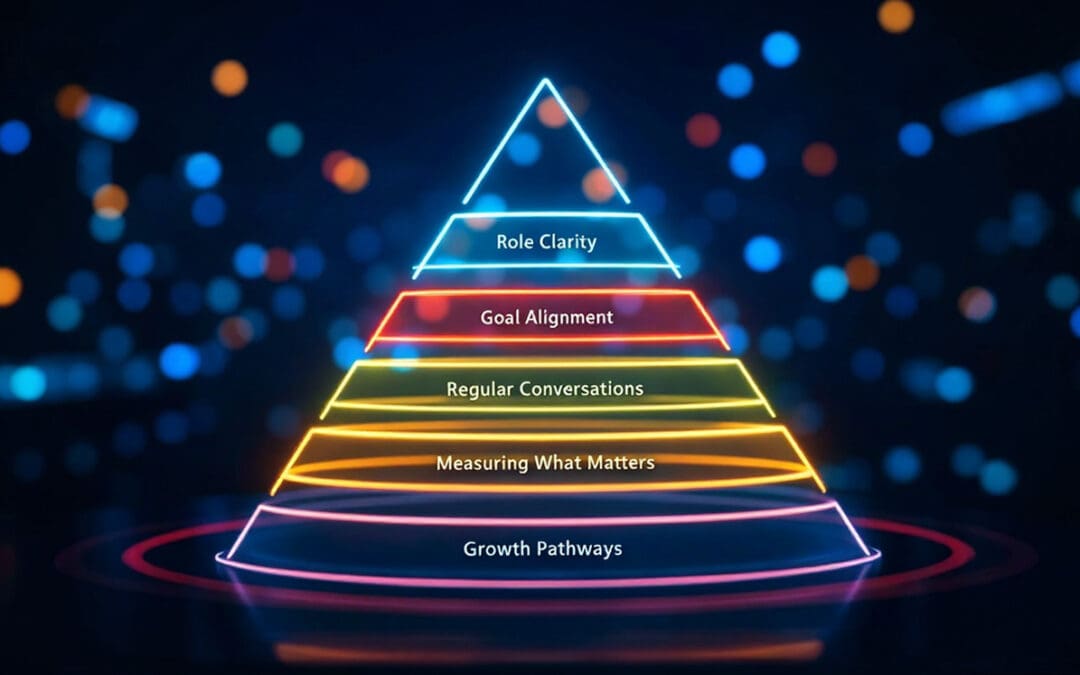Aligning team goals with organizational priorities is essential for driving success. Without alignment, teams can lose focus, productivity suffers, and business objectives go unmet. Performance Scoring empowers leaders to bridge this gap by establishing clear objectives, tracking progress, and ensuring accountability across every level of the organization.
When goals are aligned, teams understand their purpose, work collaboratively, and contribute to overall success.
Why Goal Alignment Matters
Organizational success doesn’t happen by chance—it happens through intention and clarity. Aligning team goals ensures:
- Every individual’s contributions support broader company priorities.
- Teams remain focused, reducing wasted time and effort.
- Collaboration and transparency drive collective results.
However, misalignment is more common than many leaders realize. Teams often operate in silos, losing sight of how their work connects to larger goals. This leads to disengagement and inefficiency.
The Impact of Goal Misalignment
- 70% of employees feel disengaged because they don’t understand how their work contributes to the company’s success (Gallup, 2021). Gallup Report
- Misalignment leads to duplication of work, fragmented strategies, and unclear priorities.
With Performance Scoring’s goal-tracking tools, leaders can connect daily tasks to big-picture objectives, providing teams with clarity and purpose.
How to Align Team Goals for Success
1. Set Clear, Achievable Goals
Start by defining SMART (Specific, Measurable, Achievable, Relevant, Time-Bound) goals that connect to organizational priorities. Break them down into manageable milestones so teams can measure their progress.
✅ Companies that set clear goals and review them quarterly are 31% more likely to outperform competitors (Harvard Business Review, 2020). HBR Article
Performance Scoring makes it easy to:
- Set transparent goals for each team.
- Review progress on a regular cadence.
- Adapt and re-align as business needs change.
2. Foster Collaboration and Accountability
Aligning goals requires cross-team collaboration. Teams need visibility into how their work impacts other departments.
Tools like Performance Scoring enable:
- Real-time progress tracking for individual and team goals.
- Seamless updates to ensure accountability.
- Collaborative feedback loops that keep everyone informed.
💡 Team goal alignment can boost employee engagement by up to 30% (McKinsey, 2022). McKinsey Study
3. Monitor Progress with Data-Driven Insights
Regularly tracking progress ensures teams stay aligned and motivated. Leaders can use Performance Scoring’s dashboards and reporting features to:
- Visualize team performance and goal alignment.
- Identify areas for improvement or re-alignment.
- Celebrate milestones and successes to keep teams engaged.
By integrating data and performance insights, leaders can ensure every goal contributes to the organization’s success.
The Benefits of Goal Alignment
Aligning team goals with organizational priorities has measurable benefits:
- Increased employee engagement and motivation.
- Improved collaboration and reduced workplace silos.
- Higher overall productivity and business performance.
Organizations that consistently align goals outperform competitors by fostering a sense of purpose and ownership within their teams.
Goal alignment is the cornerstone of organizational success. By setting clear priorities, fostering collaboration, and tracking progress through tools like Performance Scoring, leaders can ensure every team works in sync to achieve business objectives.
Ready to drive success through aligned goals? 🚀 Start using Performance Scoring today and empower your teams to focus, collaborate, and excel.
👉 Learn more here: Performance Scoring Tools
Peer-Reviewed Statistics Recap
1. 70% of employees feel disengaged without goal clarity (Gallup, 2021).
2. Clear and quarterly goals make companies 31% more likely to outperform competitors (Harvard Business Review, 2020).
3. Goal alignment can boost employee engagement by up to 30% (McKinsey, 2022).





